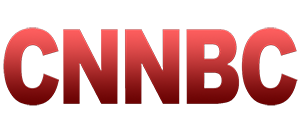
Canada Holds Legislative Elections Amidst Trade Tensions and Economic Concerns
Canadians head to the polls in an election influenced by US trade policies and domestic economic challenges.
Canada is conducting legislative elections today, ahead of the regularly scheduled October deadline, following the leadership change to Liberal Premier Mark Carney, who assumed office after Justin Trudeau stepped down in March.
The political landscape has shifted dramatically in recent months, largely influenced by the actions and policies of U.S. President Donald Trump.
Trump's expansionist rhetoric regarding Canada—suggesting it could become the fifty-first U.S. state—and his imposition of trade tariffs have raised significant concerns among Canadian voters.
These developments have seemingly impacted the Conservative Party, led by Pierre Poilievre, who, despite having a strong position previously, may face repercussions at the polls due to his perceived alignment with U.S. policies.
Current polling indicates a slight advantage for the Liberal Party under Carney.
In response to Trump's provocations, many Canadians have reportedly altered their purchasing habits, opting to boycott American products in favor of local goods.
This shift has been amplified by initiatives from various local companies advocating for Canadian-made products and services.
Carney has outlined a strategy to combat the burgeoning economic crisis characterized by rising costs and inflation.
He is promoting an investment plan aimed at boosting growth in the technology and renewable energy sectors, thereby reducing dependency on foreign markets.
Furthermore, he has introduced a new international trade policy focused on enhancing relations with Europe, Latin America, and Asia.
The election will determine all 343 members of the House of Commons, with voters from each constituency participating in a single round of voting.
The voting period will conclude at dawn tomorrow, spanning the country's multiple time zones.
Exit polls are anticipated shortly after the polls close, providing insights into voter preferences and potential outcomes.
The political landscape has shifted dramatically in recent months, largely influenced by the actions and policies of U.S. President Donald Trump.
Trump's expansionist rhetoric regarding Canada—suggesting it could become the fifty-first U.S. state—and his imposition of trade tariffs have raised significant concerns among Canadian voters.
These developments have seemingly impacted the Conservative Party, led by Pierre Poilievre, who, despite having a strong position previously, may face repercussions at the polls due to his perceived alignment with U.S. policies.
Current polling indicates a slight advantage for the Liberal Party under Carney.
In response to Trump's provocations, many Canadians have reportedly altered their purchasing habits, opting to boycott American products in favor of local goods.
This shift has been amplified by initiatives from various local companies advocating for Canadian-made products and services.
Carney has outlined a strategy to combat the burgeoning economic crisis characterized by rising costs and inflation.
He is promoting an investment plan aimed at boosting growth in the technology and renewable energy sectors, thereby reducing dependency on foreign markets.
Furthermore, he has introduced a new international trade policy focused on enhancing relations with Europe, Latin America, and Asia.
The election will determine all 343 members of the House of Commons, with voters from each constituency participating in a single round of voting.
The voting period will conclude at dawn tomorrow, spanning the country's multiple time zones.
Exit polls are anticipated shortly after the polls close, providing insights into voter preferences and potential outcomes.











